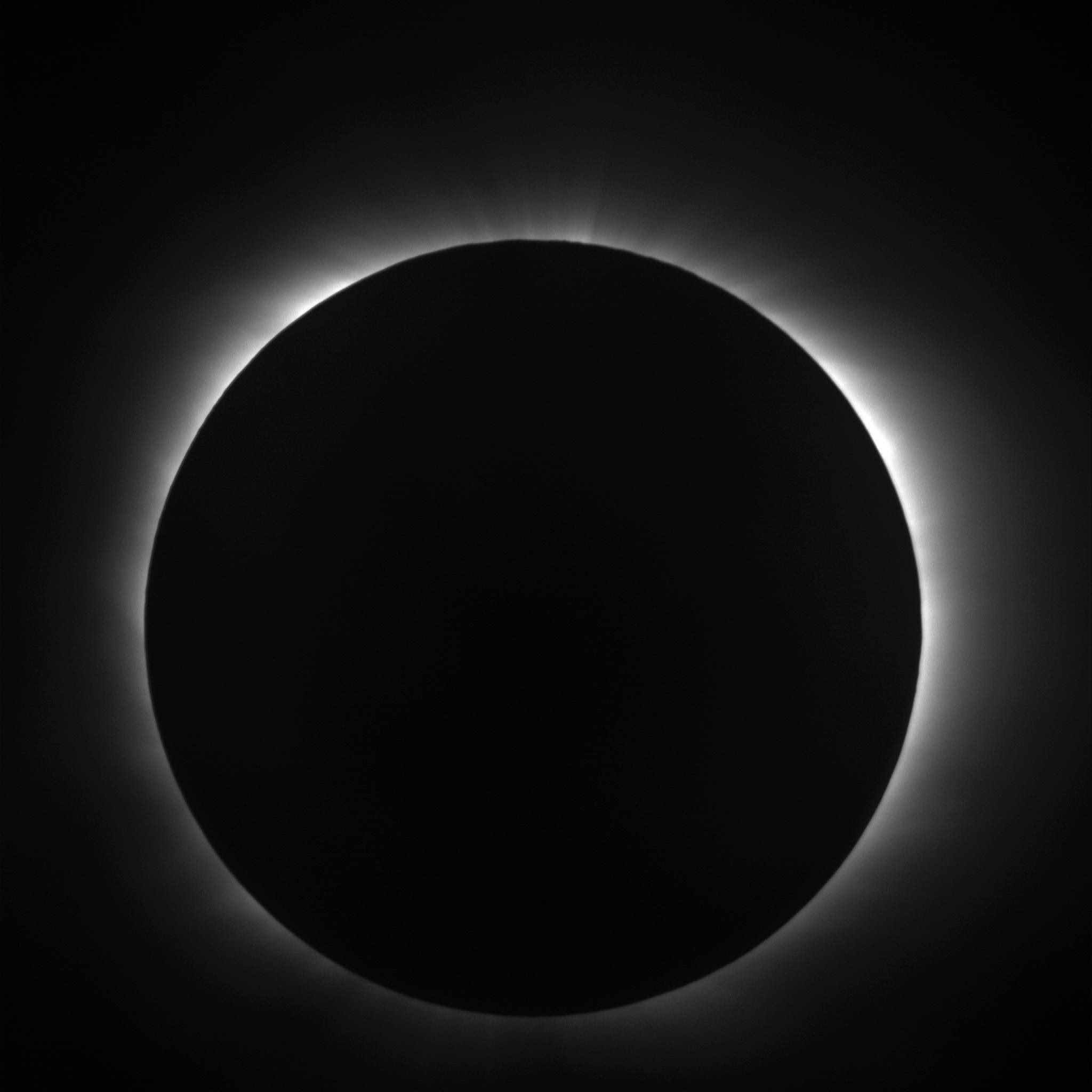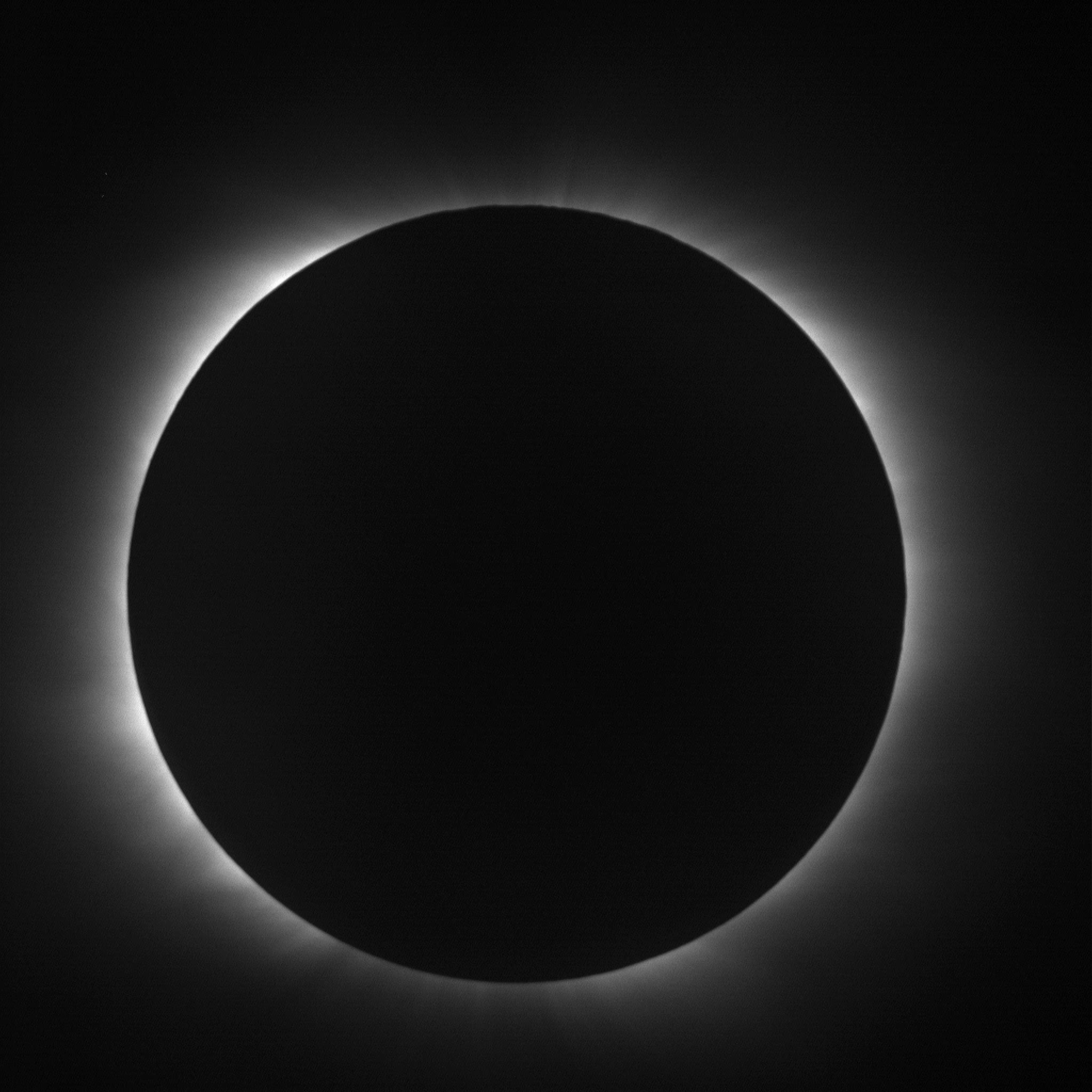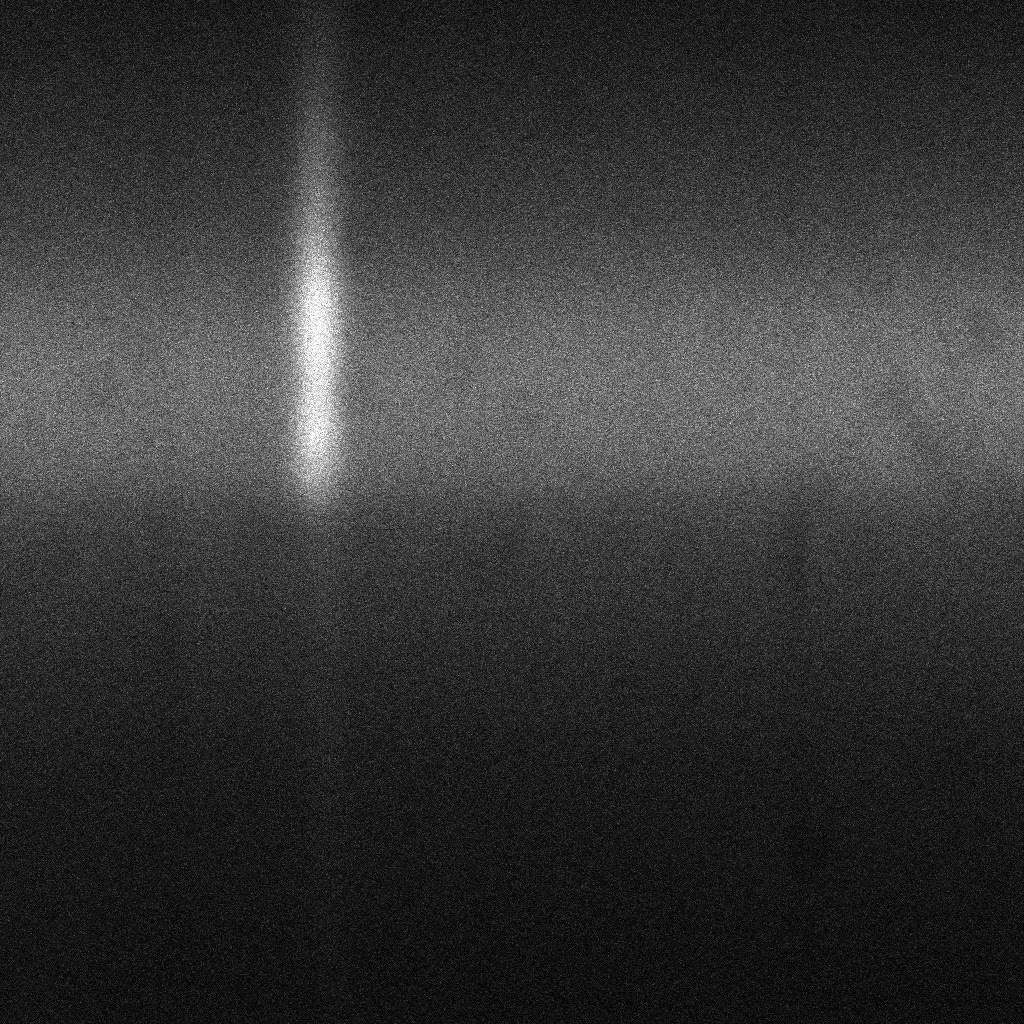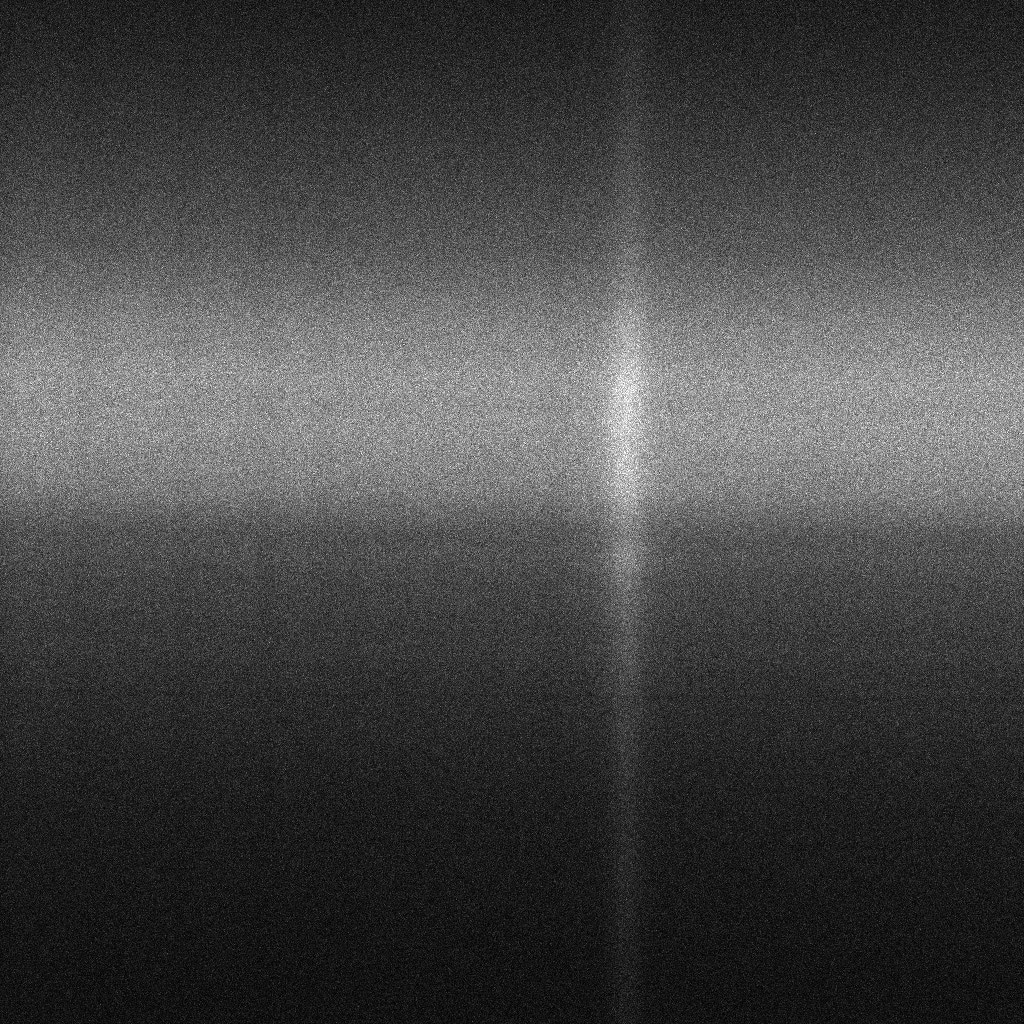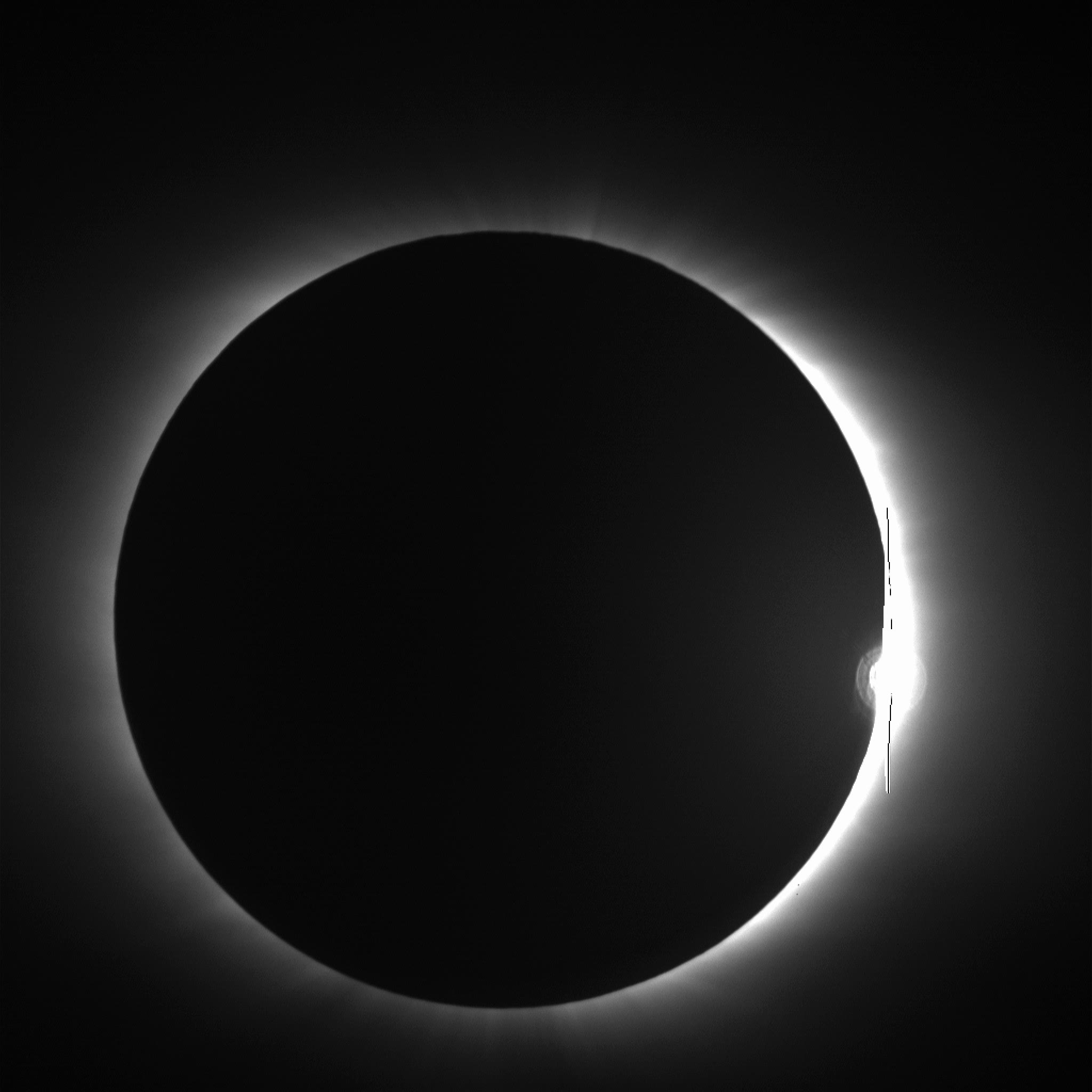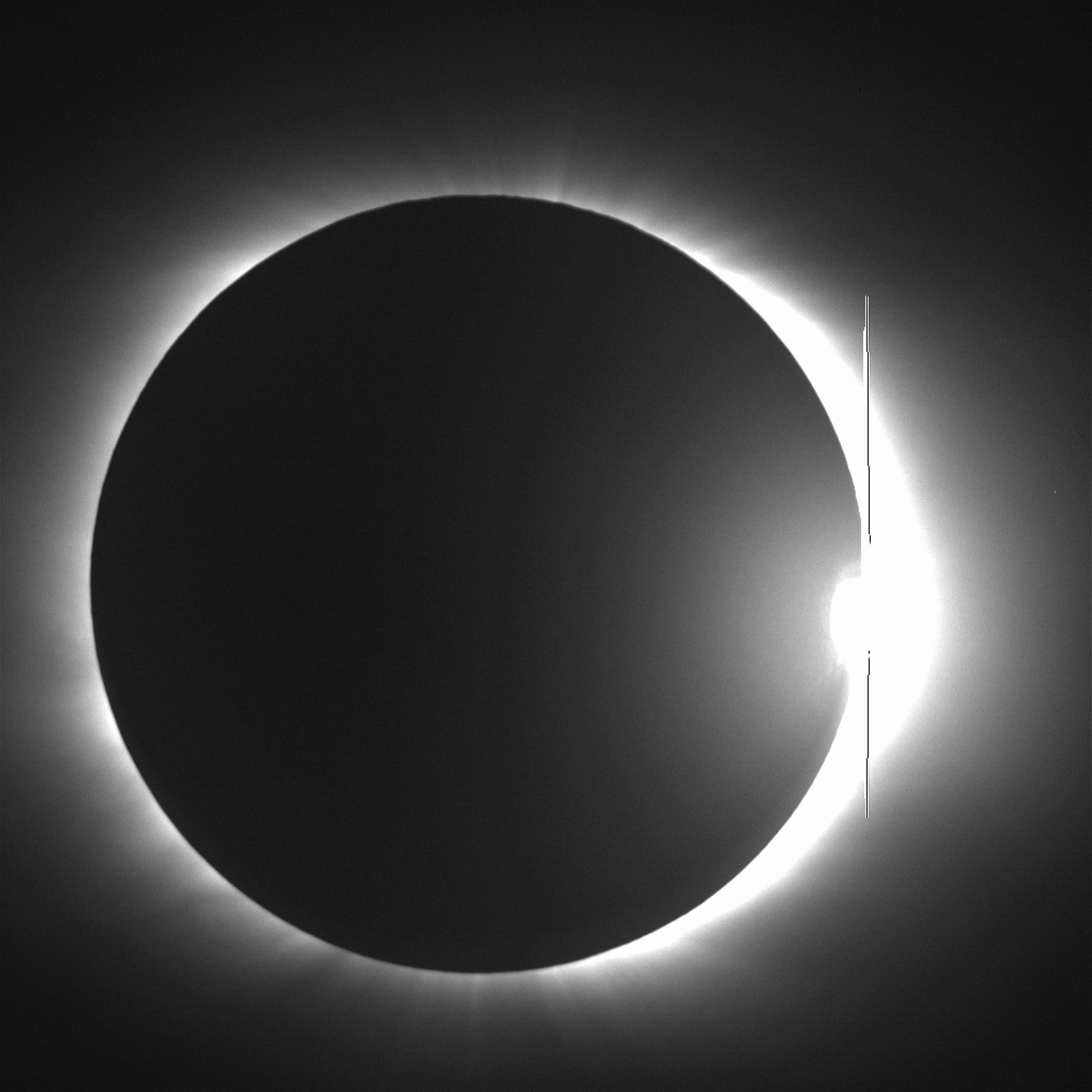IIA Astronomers observe the Total Solar Eclipse of July 22, 2009 from China
A team of scientists from the Indian Institute of Astrophysics, Bangalore set up camp at Anji, a small hilly area in the Shanghai province of China. The site was carefully selected to achieve the best chances for observations in the prevailing weather conditions along the path of totality as well as to have a long duration of totality (5 minute 38 seconds). Though the sky conditions were not perfect, the team could successfully carry out the planned experiments, which consisted of fast imaging and spectroscopy of the corona in the iron green and red lines. The accompanying image of the corona was taken with a telescope of aperture 40 cm telescope using the narrow band green line filter. The Sun is now going through a minimum phase of activity, so that the corona is more diffuse and less structured. The image reveals the presence of fine plume-like structures at the poles. A combination of imaging and spectroscopy can reveal a wealth of new information about the solar corona such as the presence of waves, that could be important for heating it to two million degrees. For further details visit www.iiap.res.in/solareclipse1

Left to right: Tuan Hui Zhou, D. Banerjee, S.S. Hasan , J. Singh, , K. Nagaraju, K. Ravi and F. Gabriel


